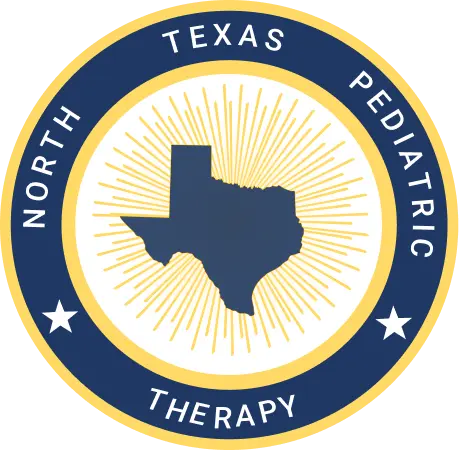In speech therapy, it’s really important to learn ways to talk better. That goes for adults and kids. This involves using different tricks and methods to help with things such as making words clear, talking smoothly, and learning new words.
This article discusses some easy speech therapy techniques you can try at home. Let’s find out these tips together and make talking easier for everyone.
Understanding Speech Therapy Techniques
Before learning the depths of speleotherapy, let us discuss the basics. Speech therapy methods is a general title that defines a variety of interventions whose purpose is to improve speech, language, and communication skills.
These techniques are based on the existing solutions to different problems, such as articulation disorders, stuttering, voice disorders, and language delays. Speech therapists use proof practices to increase clarity and smoothness and improve communication.
Speech Therapy Techniques for Adults
Here are a few speech therapy techniques for adults:
1. Breathing Exercises
Speech therapy for adults based on proper breathing support and control emphasizes the need to implement breathing exercises, which are very important to the causative mechanism of effective communication. These aim to increase respiratory capacity and coordination to achieve a clear voice projection and good diction.
A widespread practice is deep breathing through the nose. Subsequently, the diaphragm will descend, and the abdomen will expand during the inhalation. This is then followed by the semi-slow exhalation through pursed lips, manifesting in a state of relaxation and consciousness of the airflow.
Due to the integration of frequent breathing practices into their daily schedule, adults will evolve breath control, leading to a better operational voice and lasting longer during speech.
2. Vocal Warm-Ups
Like athletes who warm up their muscles before engaging in physical activity, adults can benefit by having vocal exercises to prepare their vocal mechanisms to do well. Warm-up exercises are essential in helping the vocal folds relax and expand, improve resonance, and promote flexibility.
Some exercises include humming gently, lip trills, and sirening, which slide from the low to high pitches and vice versa. The others may be through scales or sirens. Vocal exercises before speech functions or extended periods of talking can reduce vocal fatigue, prevent strains or injuries, and thus improve vocal clarity and resonance.
Introducing these vocal warm-up exercises into the components of daily vocal hygiene routines can improve vocal health and longevity in the long run.
3. Fluency Techniques
Adult participants suffering from stammering or other fluency disorders achieve fluency by adapting various speech therapy strategies. An example of such a method of speech modification is the respeaking slowed down, where an individual intentionally slows down their speech rate and creates pauses between words or phrases.
A secondary strategy is flux speech, in which people pay attention to the smooth flow of speech and gentler sounds’ onset with relaxed articulatory movements to eliminate many speech errors caused by hyperactivity.
Moreover, rhythmic or long speech techniques may be introduced to enhance fluency because of the modification of the rhythm and the pace of speech articulation. Through sustained practice of fluency techniques, adults can get control over their speech and have fewer obstructions in their everyday communication.
4. Cognitive-Linguistic Strategies
These techniques include cognitive-linguistic interventions for higher-level language problems associated with difficulties such as word-finding, comprehension deficits, and communication disorders. Essentially, these strategies help individuals to produce and understand language competently by enhancing the executive functions of attention, memory, and problem-solving.
Different techniques, for example, evaluations via semantic word retrieval, categorization tasks, association games, and storytelling, would be applied. Adults have trouble with communication because they are unfamiliar with certain languages or don’t know how to speak in different styles and on different occasions.
Therefore, through targeted therapies aimed at the specific skill gaps and compensatory strategies offered, adults may reach communication competence and improve their effectiveness in the other spheres of life.

Speech Therapy Techniques for Kids
For children, active and interesting methods should be used to practice speech and language. The speech therapy techniques for kids usually include fun activities that encourage communication and keep children occupied.
Making narratives and storytelling is a tool that has proved useful in improving language, with the child being motivated to use their creative skills as they build up their vocabulary.
The use of tongue twisters and rhyming in daily activities, as well, promotes phonological awareness and articulation development. Additionally, imitating through imitation games improves auditory discrimination and speech sound, especially for young learners.
Besides, a variety of speech therapy techniques are essential, in conjunction with general tips for speech therapy, to increase the effectiveness of the whole process. Forming a specific practice regime is crucial to cement newly acquired skills and keep the process moving forward regularly.
Technology like speech therapy apps can boost the motivation and accessibility level of learning. Nevertheless, though self-directed home practice is helpful, getting expert advice from a certified speech therapist who conducts professional personnel assessment and gives an individualized plan is more efficient.
North Texas Pediatric Therapy unleashes your child’s hidden speech potential in the most comfortable ways. They help your child enhance their cognitive communication coupled with listening and voice training and much more.
Tips for Implementing Speech Therapy Techniques at Home
1. Establish Consistent Practice Sessions
Consistently used modules should be the essence of practice for home treatment. To help your child sustain speech therapy exercises, set times during the day or a few days a week. The development should be sustained by regular training, allowing the learned assets to be imprinted firmly and the pace of one’s progress to be adjusted.
Why not try to bring the therapy practice into your usual day settings and rituals (like morning or bedtime)? You will certainly make it habitual!
2. Create a Supportive Environment
Developing a nurturing atmosphere contributes to confidence and determination during therapy sessions regarding speech therapy. Promote open communication, recognize efforts made and support changes.
Do not overburden the role of the individual; rather, concentrate on one key fact of creating a space where they are comfortable with their ideas without fear of judgment. Make a point of recognizing small achievements and providing support to create and sustain excitement and motivation.
3. Set Realistic Goals
Keeping the motivation at the proper level and measuring the progress in speech therapy in quantitative terms can be done only by establishing achievable and manageable objectives.
Involve a speech therapist in discussing the main objectives and the report, which will include the results the students have achieved and the improvement in a speech that should be made according to the current speaking level of the students.
Break the big goals into smaller, manageable milestones and reveal them all. At this rate, constantly adjust and define the terms of the goals and review them to facilitate continuous growth.
4. Track Progress and Celebrate Achievements
Metrics, marking progress, capturing the wins, and celebrating successes empower the demotivated. Document your practice sessions in a log or notepad by recording and implementing the practice and listing the progress you make and problems you might encounter.
The monitoring system must be very comprehensive, for example, graphs and charts, or the patient himself can give this feedback or a speech therapist. Each accomplishment must be recognized to motivate you to do your best.
Learn more about The Vital Importance and Benefits of Motivation!

Closing Thoughts
Using speech therapy techniques to improve speech skills is not an easy process, as it requires patience. Individuals of any age can achieve success through systems based on proof and practice strategies during their everyday routine, even making communication skills better.
It could be telling you to do breathing exercises, doing storytelling activities, or looking for professional help. Still, making speech clearer and more natural starts with taking a proper step in speech therapy. Your journey celebrates the progress milestones and ultimately realizes the power of communication effectiveness.
So, don’t forget to contact North Texas Pediatric Therapy for a brighter and more communicative future for your child!



